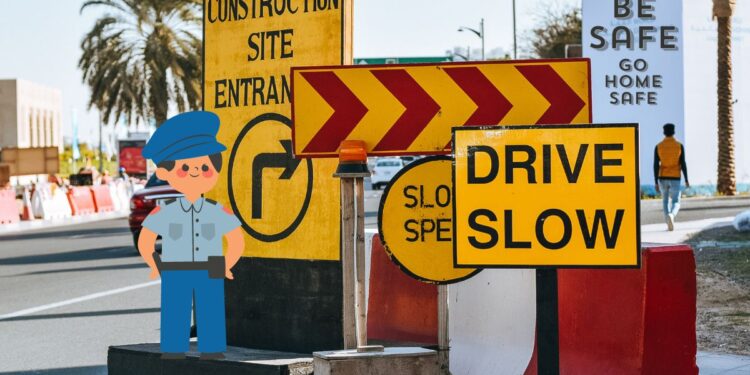हमारे दैनिक जीवन की भागदौड़ में, सड़कें एक महत्वपूर्ण जीवन रेखा के रूप में काम करती हैं, जो हमें हमारे गंतव्यों से जोड़ती हैं। हालाँकि, दुर्घटनाओं की चिंताजनक आवृत्ति सड़क यातायात सुरक्षा पर नए सिरे से ध्यान देने की तत्काल आवश्यकता को उजागर करती है। हर दिन, अनगिनत जिंदगियाँ दुर्घटनाओं से प्रभावित होती हैं, दुर्घटना के कई मामलों को सरल नियमों और विनियमों को समझने और उनका पालन करने से रोका जा सकता था।
- Cause of Drink and Drive: Driving under the influence of alcohol impairs coordination, reaction time, and decision-making. It is a major cause of accidents, as impaired drivers may not be able to navigate the road safely.
- Over Speeding: Over speeding increases the severity of accidents and reduces the time available for drivers to react. It is a common cause of road accidents, often resulting in fatalities.
- Harsh Acceleration/Braking/Maneuvering/Continuous Driving: Aggressive driving behaviors, such as harsh acceleration, braking, and maneuvering, can lead to accidents. Continuous driving without breaks can also cause fatigue, impairing driver performance.
- Cause of Fatigue Driving: Fatigue impairs alertness and reaction time. Long hours of driving without adequate rest can lead to drowsy driving, increasing the risk of accidents.
- Safe Parking: Parking in designated areas, using parking brakes, and ensuring visibility are crucial for safe parking. Illegally parked vehicles can obstruct traffic and contribute to accidents.
- Safe Reversing: Checking blind spots, using mirrors, and proceeding slowly are essential when reversing. Lack of attention during reversing can lead to collisions with pedestrians or other vehicles.
- Blind Spot: Blind spots are areas around a vehicle not visible to the driver through mirrors. Failure to check blind spots can result in collisions while changing lanes or making turns.
- Accident Factors: Various factors contribute to accidents, including human error, road conditions, weather, and vehicle malfunctions. Identifying and addressing these factors is crucial for road safety.
- Safe Driving in Fog: Reduced visibility in fog requires drivers to slow down, use headlights and fog lights, and maintain a safe following distance. Fog can create hazardous driving conditions.
- Importance of Seat Belt: Seat belts reduce the risk of injury and death in accidents. Wearing seat belts properly is a fundamental safety practice for drivers and passengers.
- MSM Rule (Mirror, Signal, Maneuver): The MSM rule emphasizes the importance of checking mirrors, signaling intentions, and then maneuvering. Following this sequence enhances communication among drivers and reduces the risk of collisions.
- Lane Management: Proper lane usage, signaling for lane changes, and maintaining a consistent speed contribute to smooth traffic flow and reduce the risk of accidents.
- Traffic Control Devices: Understanding and obeying traffic signals, signs, and road markings is essential for safe driving. These devices regulate traffic and guide drivers on the road.
- Road Signs and Benefits (Road Language): Road signs convey information about rules, hazards, and directions. Understanding road signs is crucial for navigating roads safely and efficiently.
- Safe Following Distance: Maintaining a safe following distance helps prevent rear-end collisions. The 3-second rule is a common guideline for determining a safe distance.
- Pre-Driving Inspection: Checking the vehicle’s condition before driving, including brakes, lights, tires, and fluids, ensures that it is safe for the journey.
- During Driving Preparations: Staying focused, avoiding distractions, and adjusting to road conditions are essential during driving. Preparedness enhances the ability to respond to unexpected situations.
- Post-Driving Inspection: Checking the vehicle after a trip ensures any issues are identified and addressed promptly, promoting overall vehicle safety.
- Cause of Distraction: Distractions such as phone use, eating, or adjusting controls divert attention from driving, increasing the risk of accidents.
- Demerits of Mobile Phone Use While Driving: Mobile phone use while driving can lead to distractions, reduced reaction time, and impaired judgment. It is a major contributor to accidents on the road.
सड़क यातायात सुरक्षा केवल एक व्यक्तिगत जिम्मेदारी नहीं बल्कि एक सामूहिक जिम्मेदारी है। इन आवश्यक दिशानिर्देशों को समझकर और उनका पालन करके, हम अपने और दूसरों के लिए अधिक सुरक्षित सड़क वातावरण में योगदान कर सकते हैं। आइए सड़कों पर सुरक्षा को प्राथमिकता दें और नियमों और विनियमों का पालन करने के लिए सचेत प्रयास करें, यह सुनिश्चित करते हुए कि हर यात्रा एक सुरक्षित कल की ओर एक कदम है।










